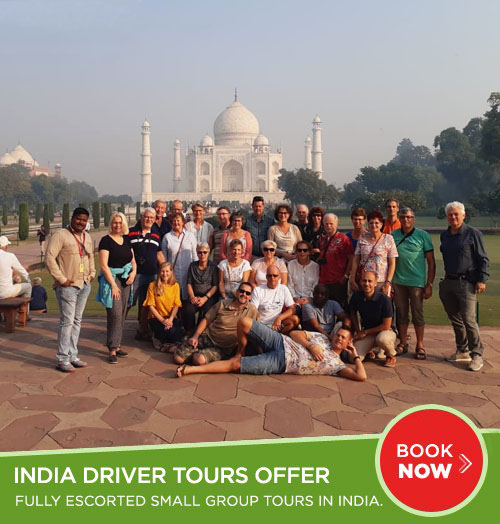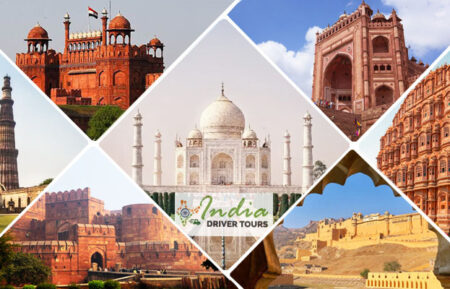While Agra is predominantly celebrated for the iconic Taj Mahal, the city is brimming with lesser-known treasures that offer a unique glimpse into its rich history and vibrant culture. Beyond the grandeur of its most famous monument, Agra’s hidden gems reveal a tapestry of offbeat experiences waiting to be explored. From serene gardens and ancient tombs to vibrant local life and unexplored natural beauty, these Agra hidden places to visit promise an enriching journey off the beaten path. Dive into the heart of Agra’s hidden gems and uncover offbeat things to do in Agra that go beyond the usual tourist spots. Whether a history enthusiast, nature lover, or cultural explorer, this guide will lead you to some of the city’s most fascinating and lesser-known attractions. Get ready to discover a different side of Agra, where every corner holds a story and every experience is a testament to the city’s diverse heritage.
1. Mehtab Bagh
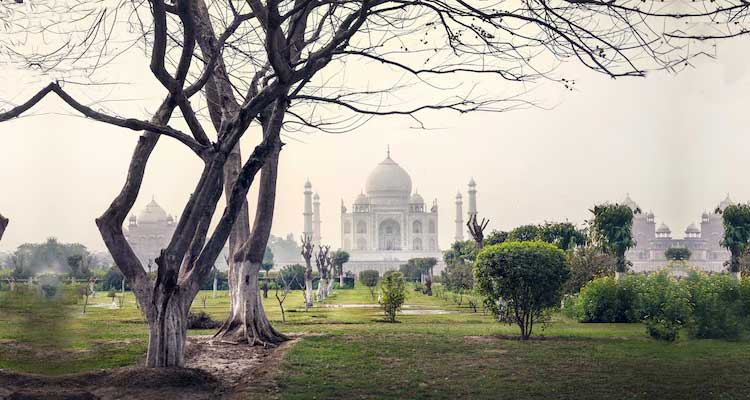
Mehtab Bagh, also known as the Moonlight Garden, is a charbagh complex situated north of the Taj Mahal and the Agra Fort. This garden was originally designed by Emperor Babur, the founder of the Mughal Empire, and later rebuilt by Emperor Shah Jahan. Mehtab Bagh offers a stunning view of the Taj Mahal from across the Yamuna River, especially during sunset when the marble monument glows in the golden light.
Timings: Sunrise to sunset
Ticket Price: INR 25 for Indians, INR 300 for foreigners
Tips: Visit during sunset for the best view of the Taj Mahal. Carry a camera and some snacks for a leisurely evening.
Suggested Trip : Delhi to Agra One Day Tour by Car
2. Chini Ka Rauza
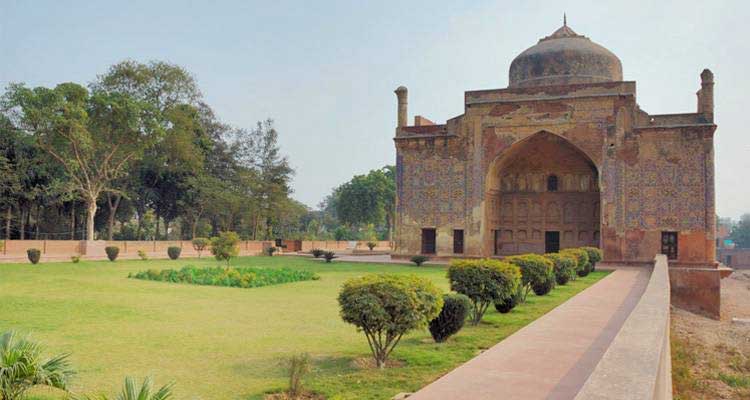
Chini Ka Rauza is the mausoleum of Afzal Khan, a scholar and poet during the reign of Mughal Emperor Shah Jahan. Located about a kilometer north of Itimad-ud-Daulah’s Tomb, this lesser-known monument is renowned for its Persian-style glazed tile work, known as chini, from which it derives its name. The vibrant colors and intricate designs make it a must-visit for art and history enthusiasts.
Timings: Sunrise to sunset
Ticket Price: Free
Tips: Ideal for history and architecture enthusiasts. Wear comfortable shoes as the area involves some walking.
3. Itimad-ud-Daulah’s Tomb
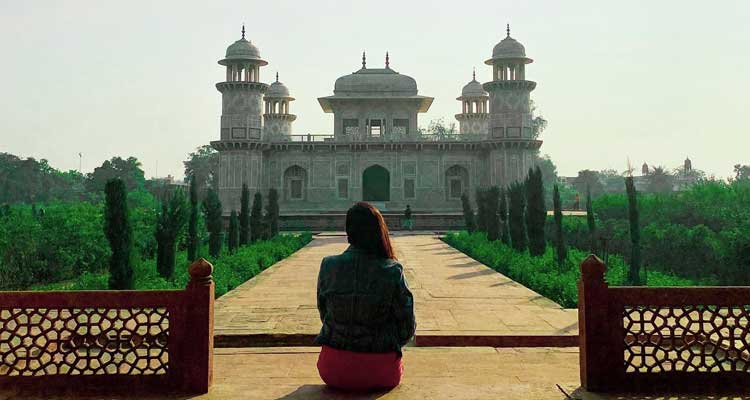
Often referred to as the “Baby Taj,” Itimad-ud-Daulah’s Tomb is a beautiful Mughal mausoleum located on the eastern bank of the Yamuna River. This tomb, built by Nur Jahan for her father Mirza Ghiyas Beg, predates the Taj Mahal and is considered a precursor to it. Its delicate marble latticework, intricate inlay designs, and serene gardens offer a tranquil retreat from the crowds.
Timings: 8:00 AM to 6:00 PM
Ticket Price: INR 30 for Indians, INR 310 for foreigners
Tips: Often referred to as the “Baby Taj,” this is a quieter spot for photography and relaxation
Suggested Trip: 2 Days Delhi Agra Tour Package
4. Korai Village
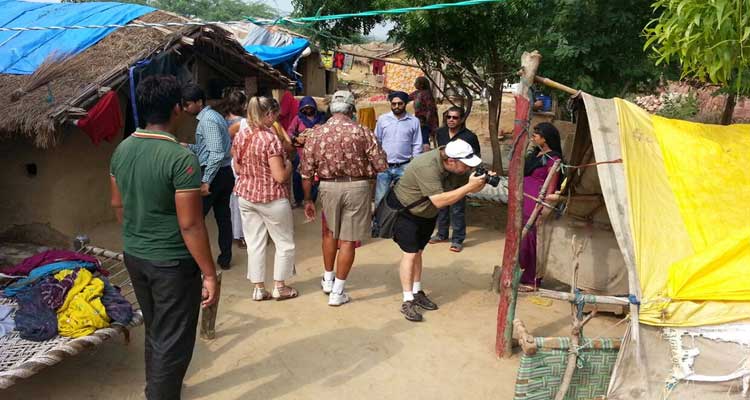
Korai Village, situated near Fatehpur Sikri, offers a unique opportunity to experience rural life in India. The village is inhabited by the Kalandhar tribe, known for their traditional snake charming and folk music. Visitors can interact with the locals, learn about their customs, and even witness traditional performances. This offbeat destination provides an authentic glimpse into the cultural diversity of India.
Timings: Open all day
Ticket Price: Varies based on activities
Tips: Engage with the local community for an authentic cultural experience. Ensure respect for local customs and traditions
5. Soor Sarovar Bird Sanctuary

Located about 20 kilometers from Agra, the Soor Sarovar Bird Sanctuary is a haven for bird watchers and nature lovers. Spread over 7.97 square kilometers, the sanctuary is home to over 165 species of resident and migratory birds. The Keetham Lake within the sanctuary attracts numerous birds, making it an ideal spot for bird photography. The serene environment and lush greenery make it a perfect getaway from the city’s hustle and bustle.
Timings: Sunrise to sunset
Ticket Price: INR 5 for Indians, INR 50 for foreigners
Tips: Best visited early in the morning or late afternoon for bird watching. Bring binoculars and a bird guidebook
6. Akbar’s Tomb
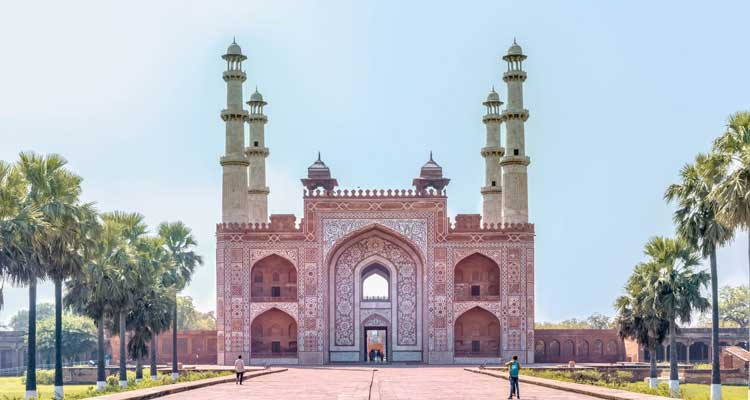
Akbar’s Tomb, located in Sikandra, is the final resting place of the great Mughal Emperor Akbar. Unlike other Mughal mausoleums, Akbar himself planned and commenced its construction, which was completed by his son Jahangir. The tomb is a blend of Hindu, Islamic, and Persian architectural styles, reflecting Akbar’s inclusive ideology. The beautiful gardens, intricate carvings, and majestic gateway make it a fascinating site to explore.
Timings: Sunrise to sunset
Ticket Price: INR 30 for Indians, INR 310 for foreigners
Tips: Spend time exploring the extensive gardens and watch for peacocks and other wildlife
7. Mariam’s Tomb
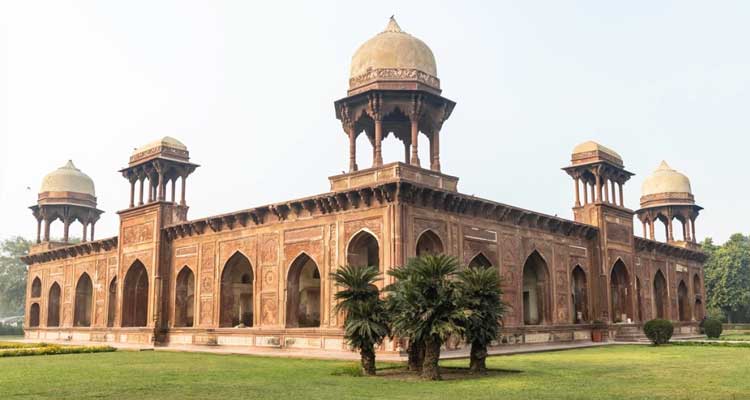
Mariam’s Tomb, located near Akbar’s Tomb in Sikandra, is the final resting place of Mariam-uz-Zamani, the wife of Emperor Akbar and the mother of Emperor Jahangir. This lesser-known monument is often overshadowed by its more famous neighbors but is equally impressive. The tomb is set in a large garden and features intricate frescoes and carvings, offering a peaceful and picturesque setting.
Timings: Sunrise to sunset
Ticket Price: Free
Tips: A peaceful place with fewer tourists. Great for photography and leisurely walks.
8. Ram Bagh
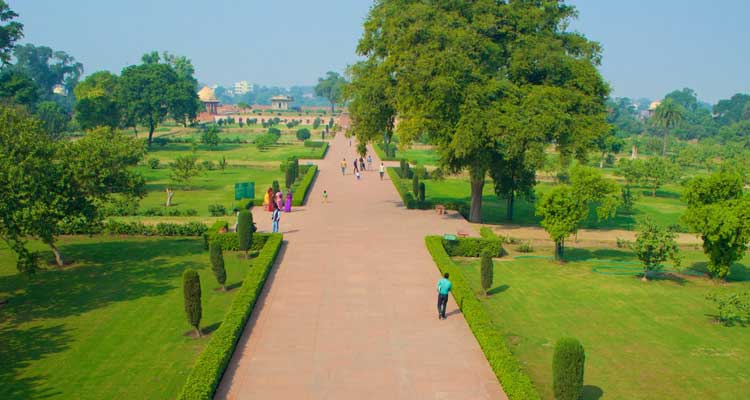
Ram Bagh, one of the oldest Mughal gardens in India, was built by Emperor Babur in 1528. Originally named Aram Bagh, meaning “Garden of Relaxation,” it was intended as a retreat for the emperor. The garden’s layout is typical of Mughal Charbagh design, with symmetrical pathways and water channels. Ram Bagh is a tranquil oasis in the heart of Agra, perfect for a leisurely stroll amidst nature.
Timings: Sunrise to sunset
Ticket Price: INR 15 for Indians, INR 200 for foreigners
Tips: Ideal for a relaxing stroll. Bring a picnic and enjoy the historical ambiance
9. Fatehpur Sikri
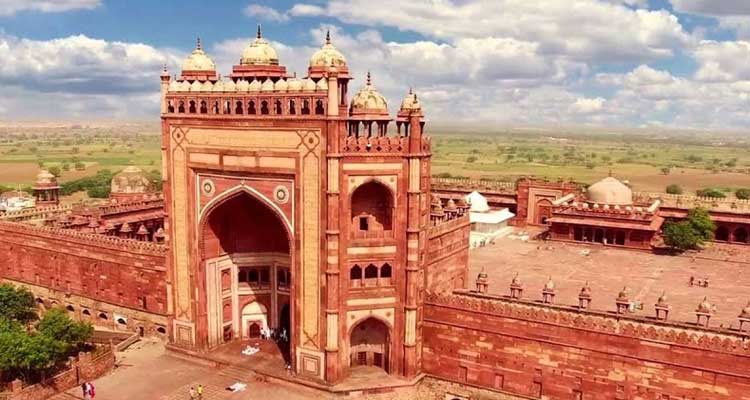
Fatehpur Sikri, a UNESCO World Heritage Site, is a historic city about 40 kilometers from Agra. Built by Emperor Akbar in the late 16th century, it served as the Mughal capital for a brief period. The city’s well-preserved buildings, including the Buland Darwaza, Panch Mahal, and Jama Masjid, showcase a blend of Hindu and Islamic architectural styles. Despite its historical significance, Fatehpur Sikri remains relatively less crowded compared to other major attractions in Agra.
Timings: Sunrise to sunset
Ticket Price: INR 50 for Indians, INR 610 for foreigners
Tips: Allocate several hours to explore this extensive site. Hire a guide to appreciate the history and architecture fully
10. Gurudwara Guru Ka Taal
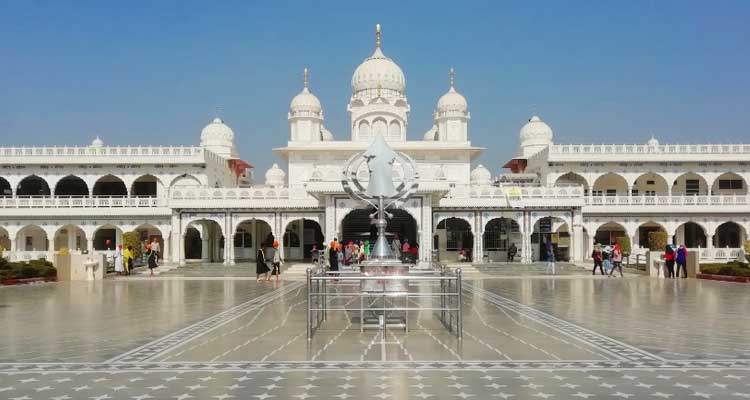
Gurudwara Guru Ka Taal, located near Sikandra, is a significant Sikh pilgrimage site. This historic gurudwara commemorates the visit of the ninth Sikh Guru, Guru Tegh Bahadur, who voluntarily surrendered to the Mughal forces here. The gurudwara’s serene environment, beautiful architecture, and community kitchen (langar) make it a peaceful and welcoming place for visitors of all faiths.
Timings: Open all day
Ticket Price: Free
Tips: Respect the customs, cover your head inside the Gurudwara, and partake in the Langar (community meal).
11. Mankameshwar Temple
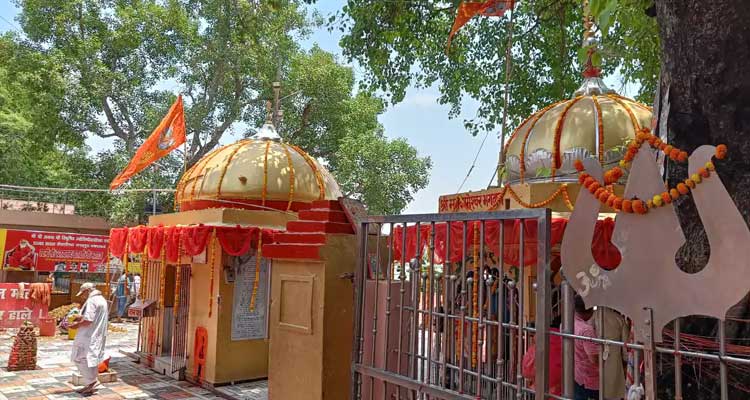
The Mankameshwar Temple, dedicated to Lord Shiva, is a historic temple in Agra that dates back centuries. Located near the Jama Masjid and Agra Fort, this sacred site is believed to have the power to grant devotees’ wishes. Its beautiful carvings, peaceful atmosphere, and proximity to bustling markets make it an enchanting place to visit. For a truly immersive experience, attend the evening aarti (prayer ceremony) at the temple.
Timings: 5:00 AM to 9:00 PM
Ticket Price: Free
Tips: Visit during the evening aarti for a mesmerizing experience. Dress modestly and be prepared for crowded conditions
12. Shilpgram: A Cultural Hub

Shilpgram is a crafts village that showcases traditional Indian art and crafts. Visitors can explore the vibrant markets, enjoy cultural performances, and purchase unique handicrafts as souvenirs
Timings: 10:00 AM to 5:00 PM
Ticket Price: INR 40 for Indians, INR 200 for foreigners
Tips: Visit during cultural festivals or events for a richer experience. Wear comfortable walking shoes and carry cash for purchasing handicrafts. Engage with local artisans to learn about their crafts and traditions.
13. Agra Bear Rescue Facility

Nestled within the Sur Sarovar Bird Sanctuary, lies the Agra Bear Rescue Facility – the largest of its kind in the world. Operated by Wildlife SOS, this center is dedicated to rescuing and rehabilitating sloth bears that were once exploited for entertainment as “dancing bears.” Visitors can witness firsthand the stories behind these rescued animals, learn about ongoing conservation efforts, and gain a deeper understanding of wildlife protection. It’s an eye-opening experience that sheds light on our responsibility towards preserving these magnificent creatures.
Timings: 8:00 AM to 6:00 PM
Ticket Price: Donations are appreciated
Tips: Call ahead to schedule a visit. Learn about the conservation efforts and support the cause.
14. Radha Swami Samadhi
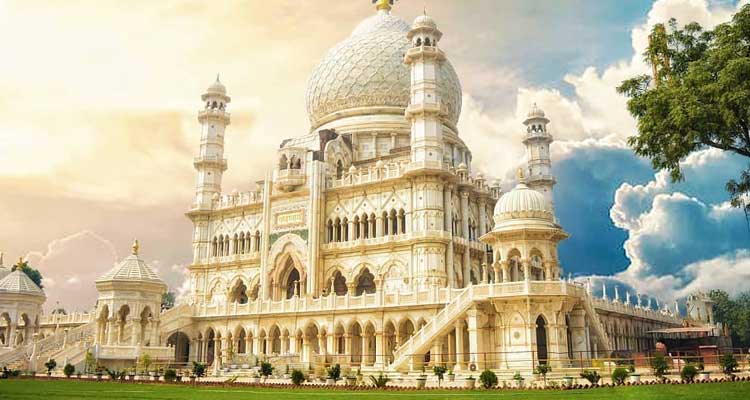
The Radha Swami Samadhi, also known as the Dayal Bagh, is the mausoleum of the founder of the Radha Swami faith, Shiv Dayal Singh. Located in the Dayal Bagh area of Agra, this unfinished structure is a remarkable blend of various architectural styles, incorporating Hindu, Islamic, and Christian elements. The serene gardens, intricate marble work, and ongoing construction make it a unique site worth visiting.
Timings: 10:00 AM to 5:00 PM
Ticket Price: Free
Tips: Observe ongoing construction and the intricate marble work. Wear comfortable shoes and respect the serene environment.
15. Jama Masjid
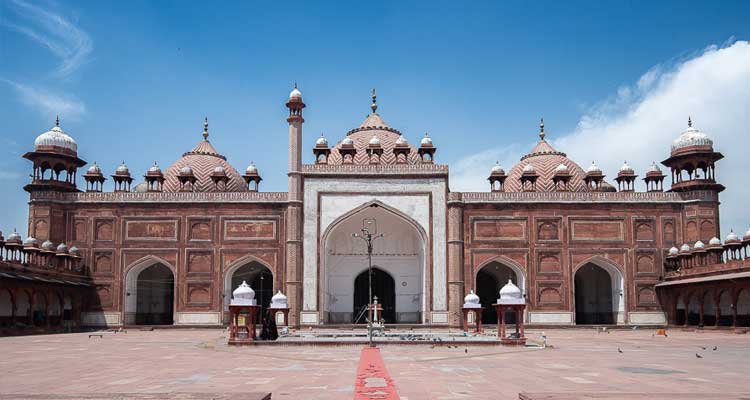
Jama Masjid, one of the largest mosques in India, is located in the heart of Agra’s bustling market area. Built by Shah Jahan in 1648 in honor of his favorite daughter, Jahanara Begum, the mosque is an architectural marvel with its intricate designs and spacious courtyard. Despite being less frequented by tourists, Jama Masjid remains an important place of worship and a significant historical site.
Timings: 6:00 AM to 8:00 PM
Ticket Price: Free
Tips: Dress modestly and remove shoes before entering. Visit during non-prayer times for a quieter experience
Offbeat Things to Do in Agra
Exploring Agra’s hidden gems goes beyond visiting lesser-known sites. Engaging in offbeat activities can provide a deeper understanding of the city’s culture and history. Here are some unique experiences to consider:
Cycle Tour of Agra
Discover Agra’s charm on a guided bicycle tour, which takes you through narrow lanes, bustling markets, and historic monuments. Cycling allows you to explore the city at your own pace, uncovering hidden corners and local life that are often missed by tourists.
Local Cooking Classes
Participate in a cooking class to learn how to prepare traditional Mughlai cuisine. These classes often include market visits to source fresh ingredients and hands-on cooking sessions. It’s a great way to immerse yourself in the local culture and savor authentic flavors.
Heritage Walks
Join a heritage walk to explore the old city, uncovering stories and secrets of Agra’s past that are often overlooked by mainstream tourists. These guided walks provide insights into the city’s history, architecture, and cultural heritage, enriching your travel experience.
Pottery Workshops
Try your hand at traditional pottery making in one of Agra’s local workshops. Under the guidance of skilled artisans, you can create your pottery pieces, learning about the craft’s history and techniques. It’s a fun and creative way to engage with Agra’s artisanal heritage.
Street Food Tours
Agra’s street food is legendary, offering a culinary adventure for food lovers. Embark on a guided street food tour to sample local delicacies such as petha (a sweet made from ash gourd), kachori (deep-fried pastry filled with spicy lentils), and chaat (savory snacks). These tours provide a delicious introduction to Agra’s vibrant food scene.
Photography Tours
Capture the essence of Agra through a photography tour, focusing on hidden alleys, vibrant markets, and architectural marvels. These tours, led by professional photographers, offer tips and techniques to enhance your photography skills while exploring the city’s photogenic spots.
Conclusion
Agra’s hidden gems offer a rich tapestry of history, culture, and natural beauty beyond the iconic Taj Mahal. From tranquil gardens and historic tombs to vibrant villages and wildlife sanctuaries, these offbeat attractions provide a deeper understanding of Agra’s heritage and diversity. Whether you’re a history buff, a nature enthusiast, or a cultural explorer, these lesser-known places promise a memorable and enriching experience. So, next time you visit Agra, venture off the beaten path and discover the city’s best-kept secrets.


